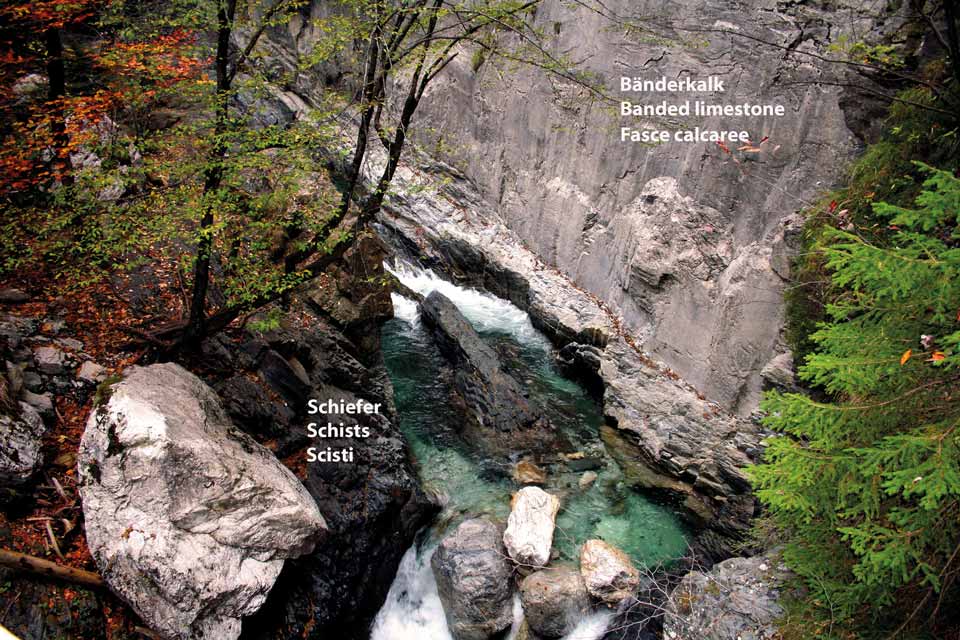The erosive forces of the water are responsible for exposing the second main rock type present along the Geotrail – grey schists.
The schists contain sand and were formed in a shallow sea. Rivers washed fine-grained erosion material from a long-gone island or continent into the primordial sea. These conditions are thought to have existed on Earth 450 million years ago and 330 million years ago respectively. However, it is not possible to date the schists exactly because they do not contain any fossils.
As with the banded limestone, these schists were also covered by younger rock deposits and were subject to two mountain building processes. The resulting pressure compressed the schists and changed their composition (metamorphosis). The cleavage of the schists is much more distinct than that of the banded limestone because unlike the granular limestone structure they are composed of flake-like minerals (sericite and chlorite). The schists are therefore less resistant to the erosive forces of the Garnitzen brook than the compact limestones.

